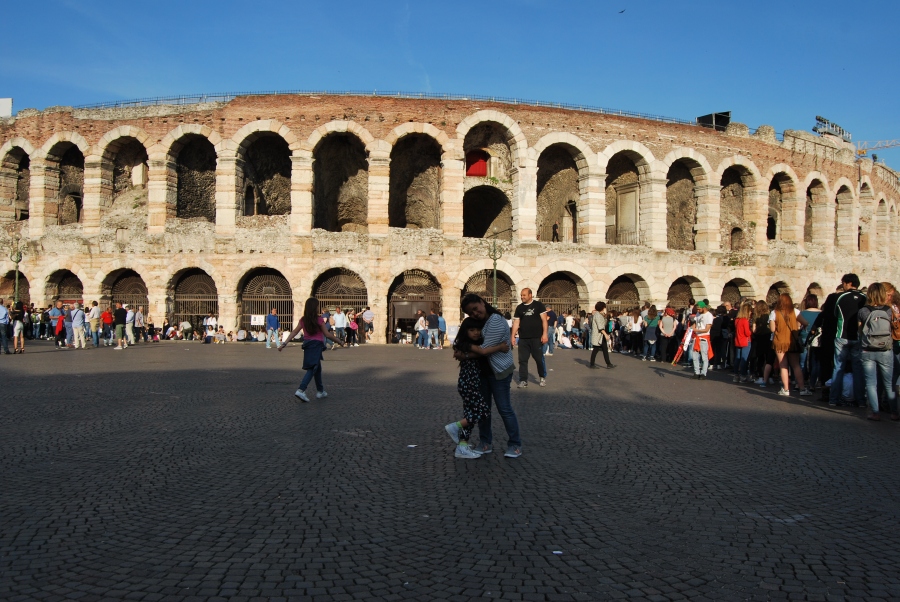
Verona might not be as famous as the well known cities like Rome, Venice or Florence, but i guess it is one of the most fascinating and romantic places in Italy. It is considered as the “Italy’s door”, because it’s the first city that people will see coming from the North.
It’s my second time to go to Verona (first time was four years ago i think). We had a one day trip then, so we didn’t have chance to see all of the spots. This time we got two days to savor more of the city. I’m with my good friend, and her daughter. It’s their first time to be here. Let’s just say this trip is “working with pleasure”. Our kids have two scheduled photo shoots, that’s why we happened to be in Verona.
I know that people (including me), always think of Romeo and Juliet when Verona is cited. But hey, the city’s beauty doesn’t end with the Juliet’s balcony. I’m sure when you get to stroll around the city, you’ll be back home talking about everything else.
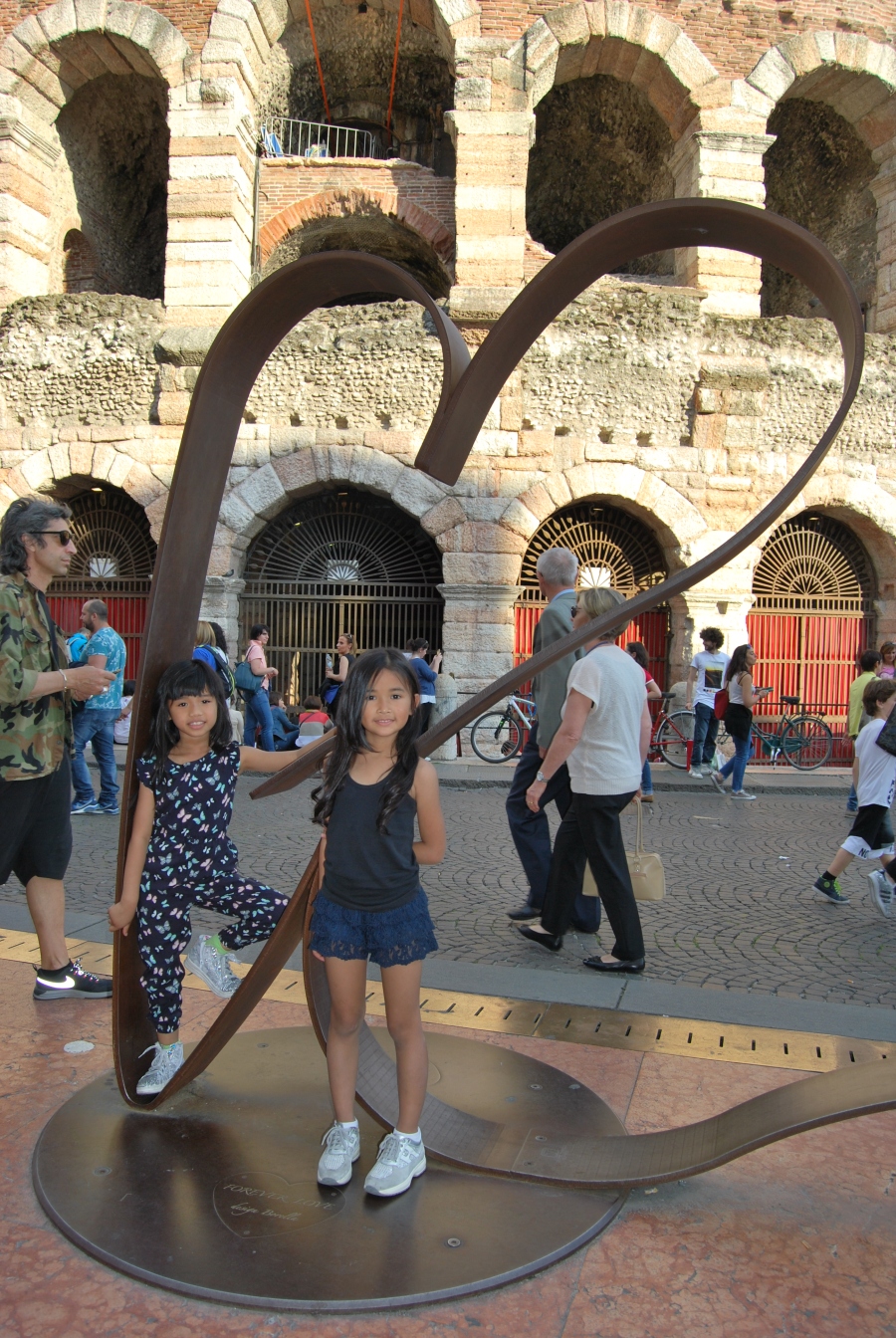
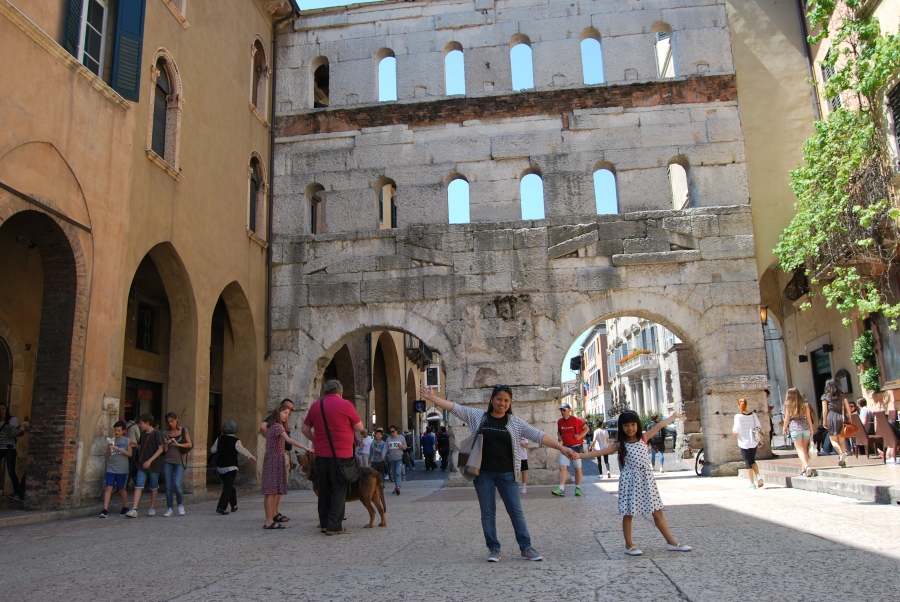
Verona is full of artistic, historical and cultural histories, all this in a city that maintains a suggestive atmosphere made of alleys, squares and typical food. We were lucky to be booked at a cozy apartment at the city center. Looking from our window, we see the Torre dei Lamberti right away and a glimpse of Piazza delle Erbe.
From the Verona train station, we just walked right through the city. It’s not that far anyway. The first plaza to welcome the visitors or tourists is the Piazza Bra, where the Roman amphitheater, better known as the Arena di Verona is located. A solid and impressive structure with the exterior faced of bricks and red marble (called “rosso Verona”) which create a particular chromatic effect; the interior with its central stage and a tier of concentric seats give an effect of grandeur. The Arena maintains its hundred-years function indeed it still is the stupendous background of concerts and musical manifestations.
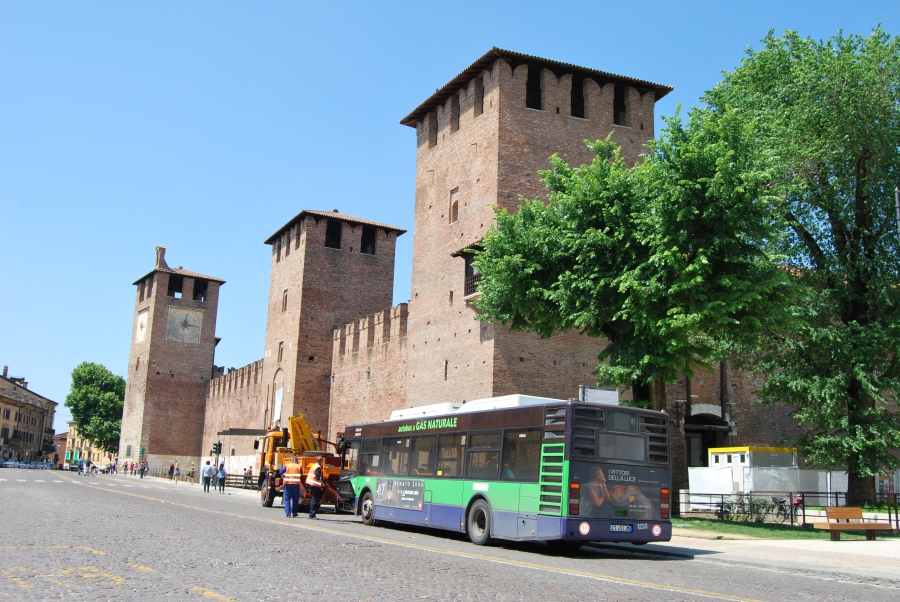
Castelvecchio (literally: Old castle) with its amazing fortified bridge, represent a military monument of the Scaligera (the Scaligera was the noble family, also called “della Scala”, that governed Verona) dominion. Cangrande II della Scala wanted the construction of this fortress not to protect him from exterior dangers, but to protect himself from popular riots. The bridge projected the castle on the other side of the river, assuring a safe way to escape in the countryside. The bridge has three arch, it was destroyed in 1945 from the Germans but it was rebuilt in 1951, while the castle is seat of the civic museum of Verona.
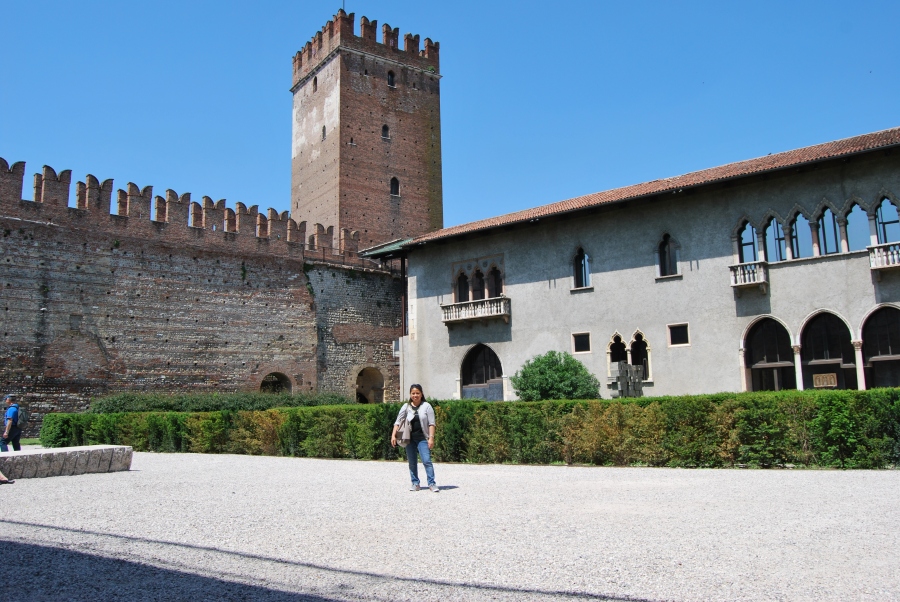
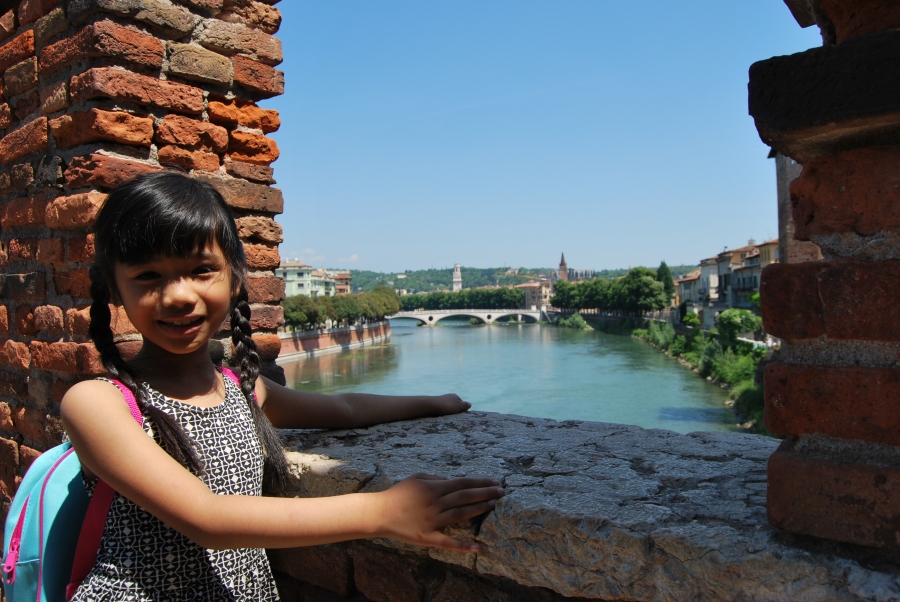
I guess Ponte Pietra is the most beautiful bridge in Verona. It is a pedestrian only bridge which takes you into a quieter area of the city. From this entrance you are close to two churches – the Duomo and St Anastasia.
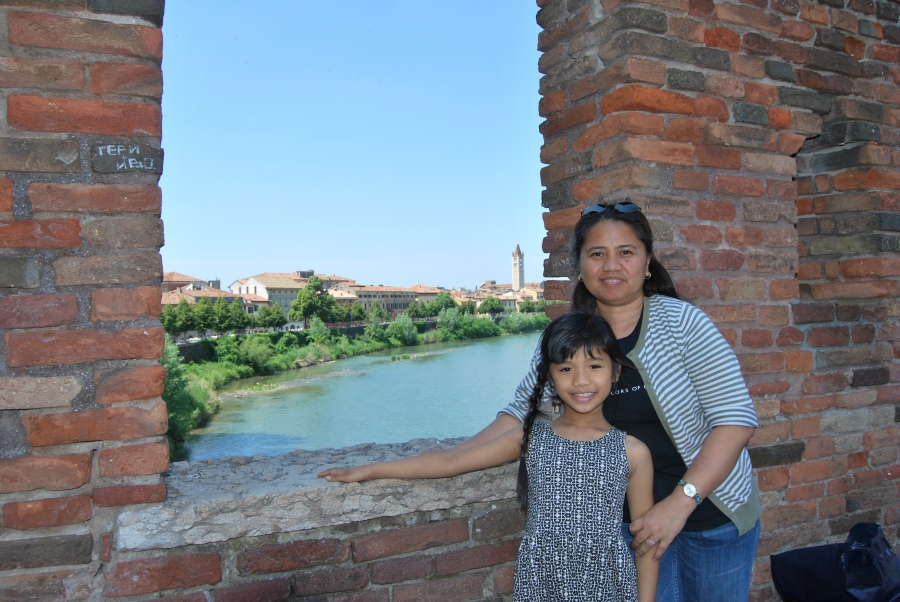
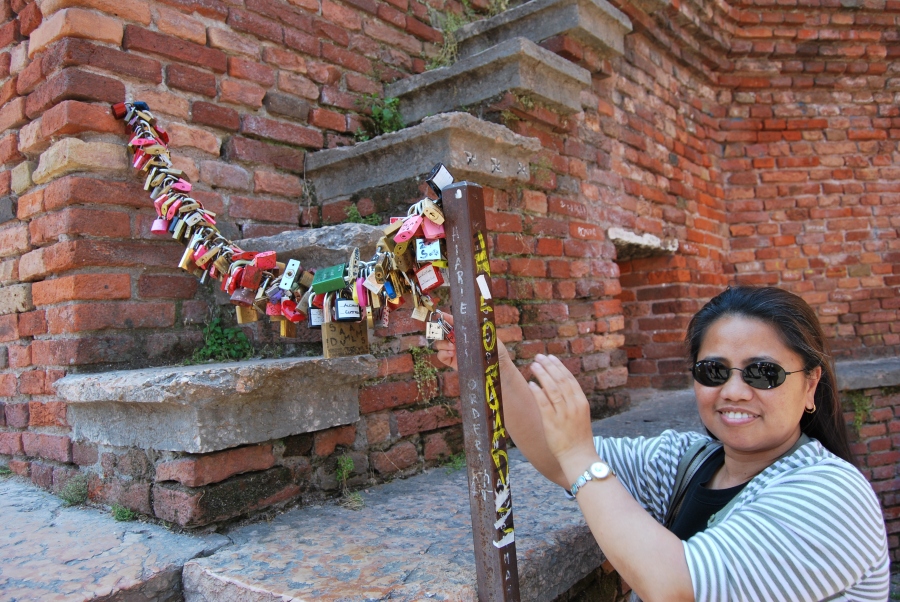
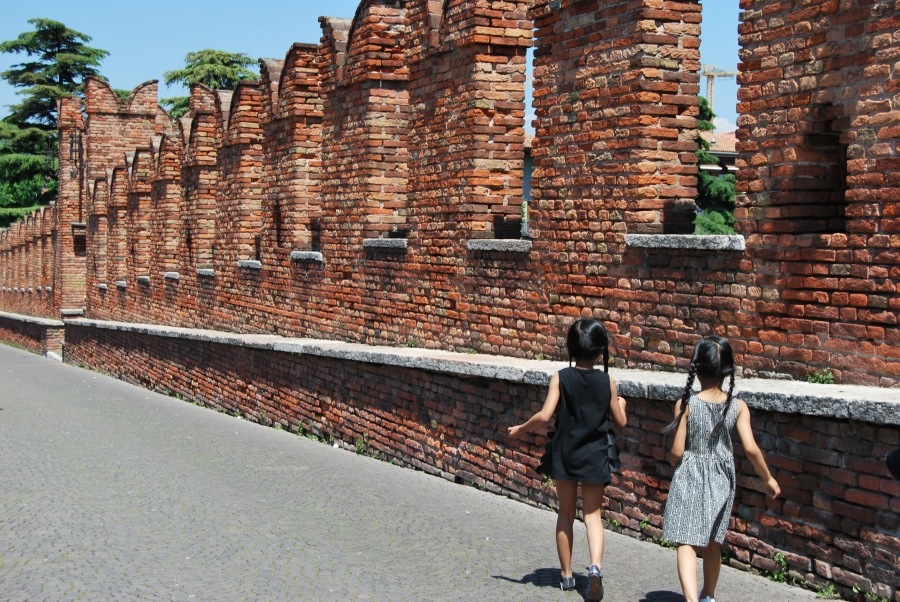
While we were taking pictures near the Arena, some young guys stopped us and asked a photo with our daughters. (see photo collage up, left picture). OK, i thought they want a photo with us, moms, but we were wrong. Ha ha ha! Poor moms. Later that night, we found out that these guys are members of the band called Adversor. Well, it’s not new for me anymore that one or two will stop us for a photo. Some recognizes my daughter from the magazines or maybe catalogs (she’s a child model here in Italy). Or some are just simply charmed by my daughter, as well as the daughter of my friend.
After that, we decided to take that train tour. We got kids with us, and we can’t afford to get them tired. For only 6.50 euro each, the train will bring you to the best spots in Verona far from the center. Cool!
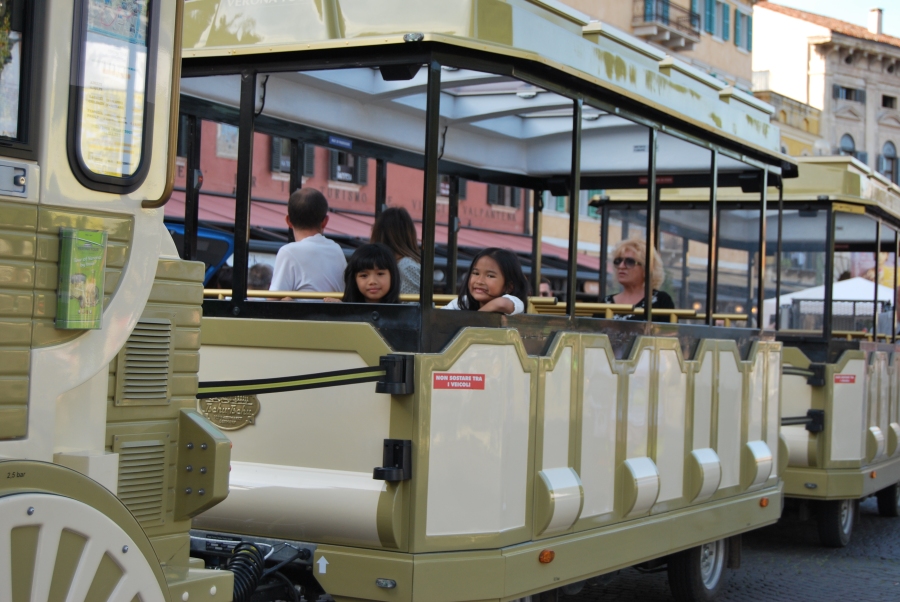
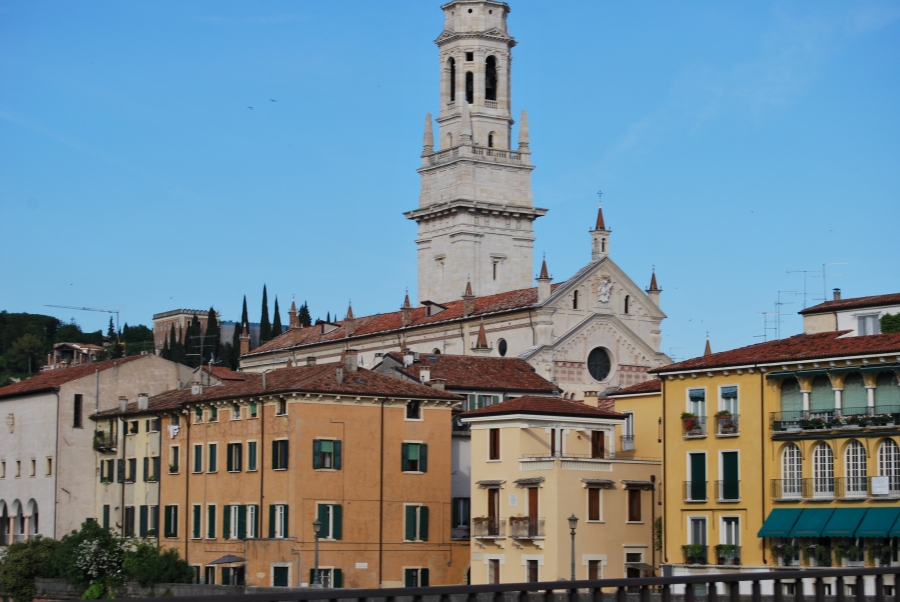
As with most Italian cities, for a true taste of the passionate, romantic and devout character of the city, you’ve got to head to church. The cathedral is the most visited site, but the swirling frescoes of Santa Anastasia, the elaborate funerary monument of Santa Maria Antica, and the cloisters of San Zeno, make these churches the city’s most beloved.
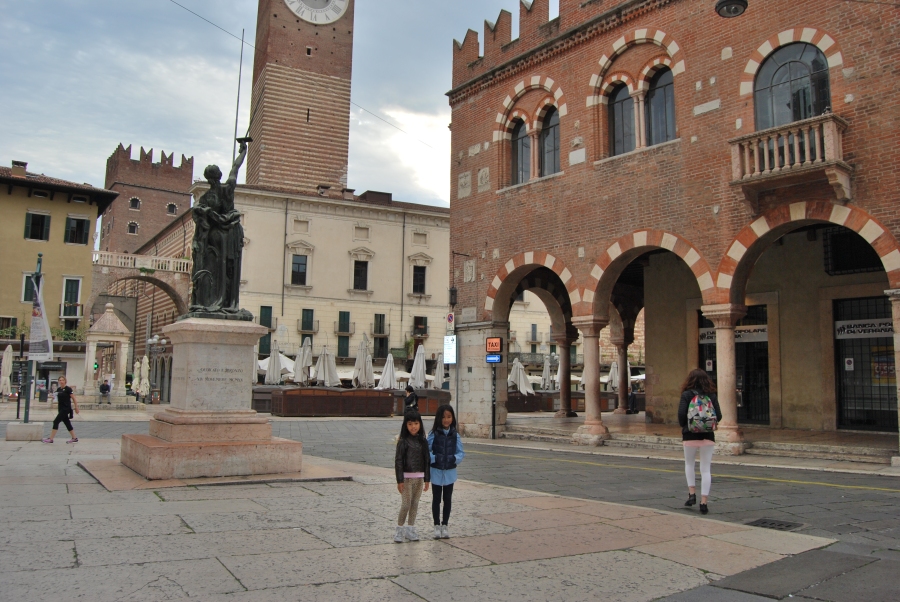
Next, from Piazza Bra, hit the streets for Piazza delle Erbe. You can get there via Via Mazzini, Verona’s best shopping street. Via Mazzini always seems crowded, because the street is so narrow and the tourists just bumped into each other.
Piazza delle Erbe is a colored fruit and vegetable market with its group of huge sun umbrellas, surrounded by historic buildings and monuments, that’s the principal characteristic of the most ancient square in Verona. The medieval buildings took the place of the Romans ones. Here you can see the popular side of the city. A tour in piazza Erbe let you discover the monuments that make this city so beautiful and that signed Verona’s history. In the center of the square there’s the fountain “Madonna Verona”, which is very ancient (1368). There’s an ancient capital too, also called “Tribuna” or (wrongly) “pillory”.
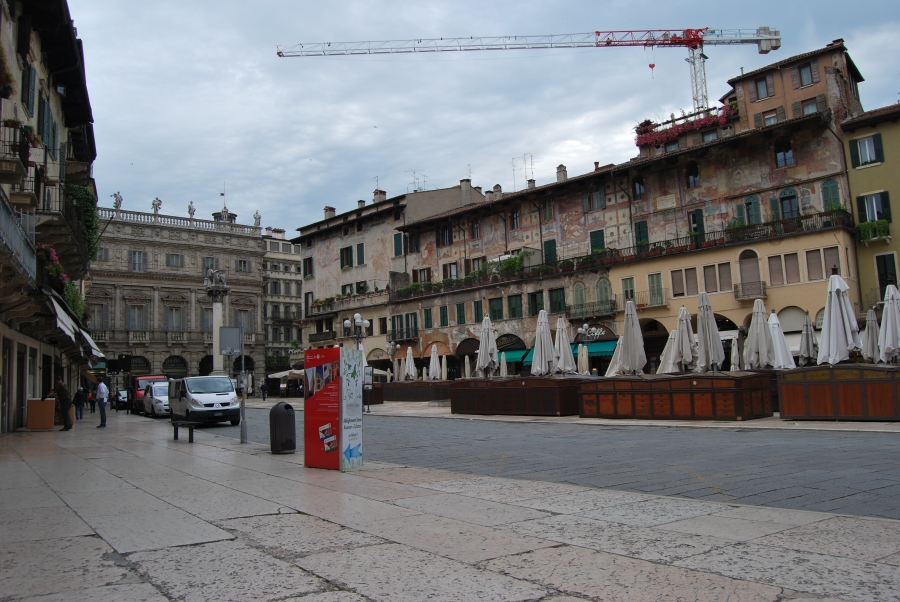
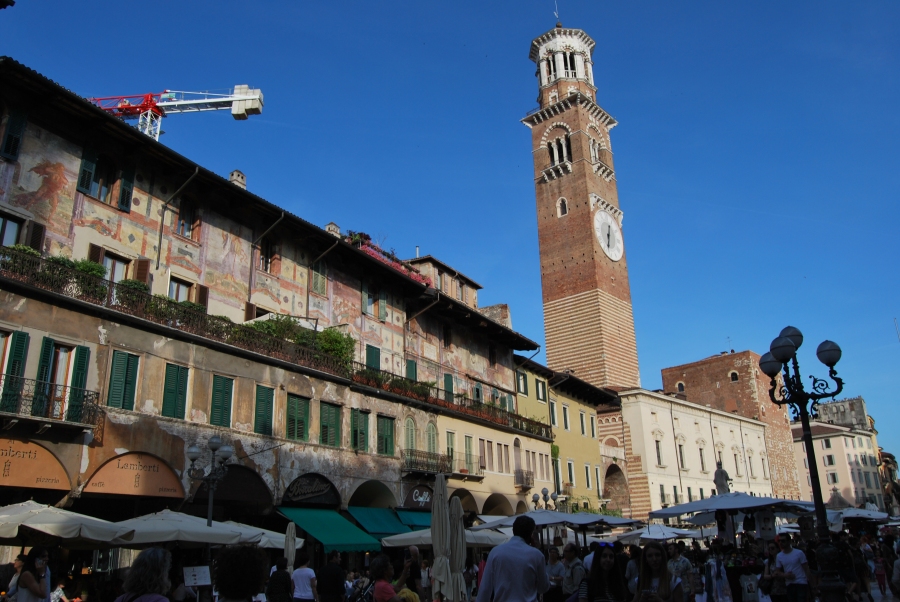
You can see the Palazzo della Ragione from the main squares of the centre: Piazza delle Erbe and Piazza dei Signori, at the foundation of Lamberti Tower.
You can’t miss the “Scala della Ragione” (Reason Stairs): this great gothic stair-case was originally covered. Its name is derived from the fact that it held up to law-courts situated here two centuries ago.
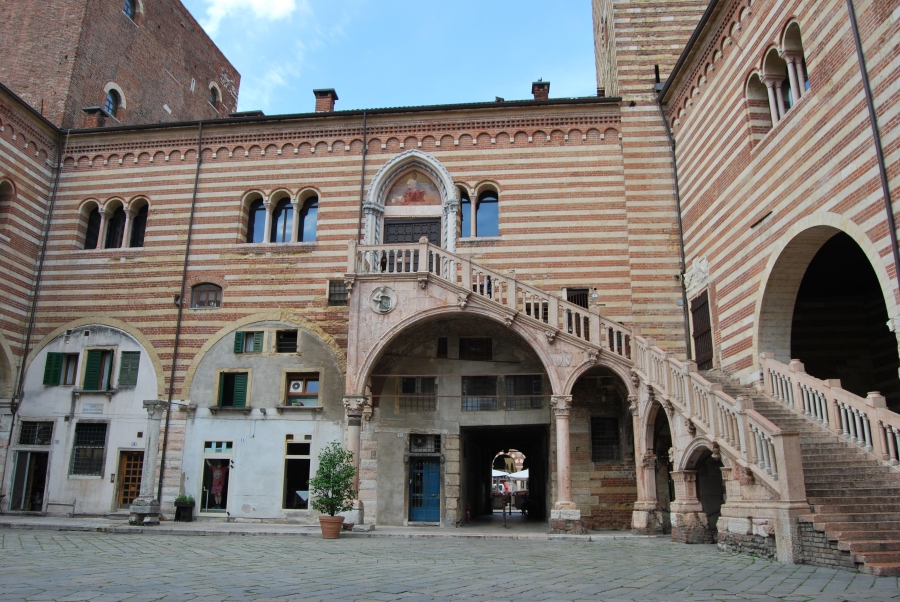
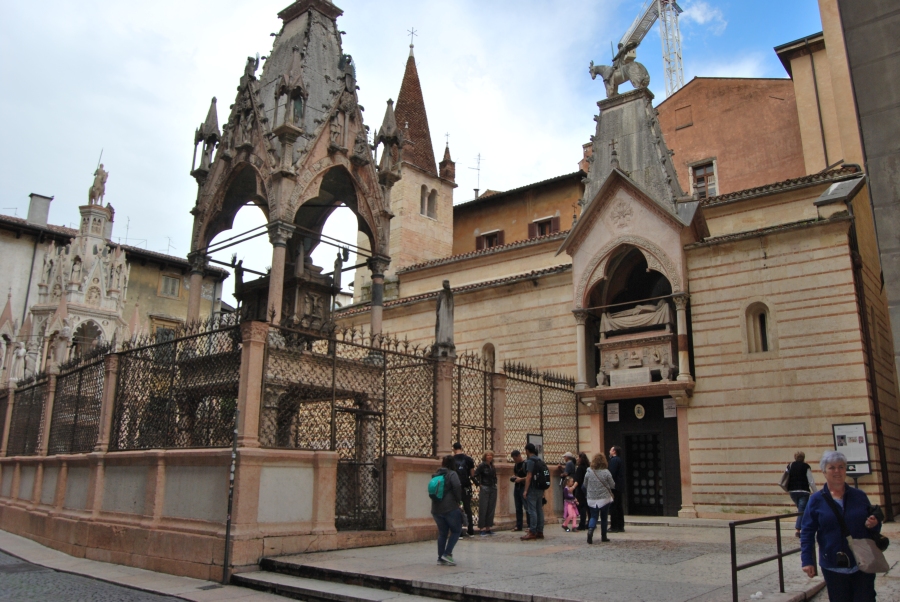
The Scaliger Tombs are right next to Piazza dei Signori. These are a group of five very elaborate and highly decorated tombs commemorating the Scaliger family, who ruled Verona from the thirteenth to the late fourteenth century. The tombs are in the courtyard of the church of Santa Maria Antica. You can view them through an iron fence without entering the church.
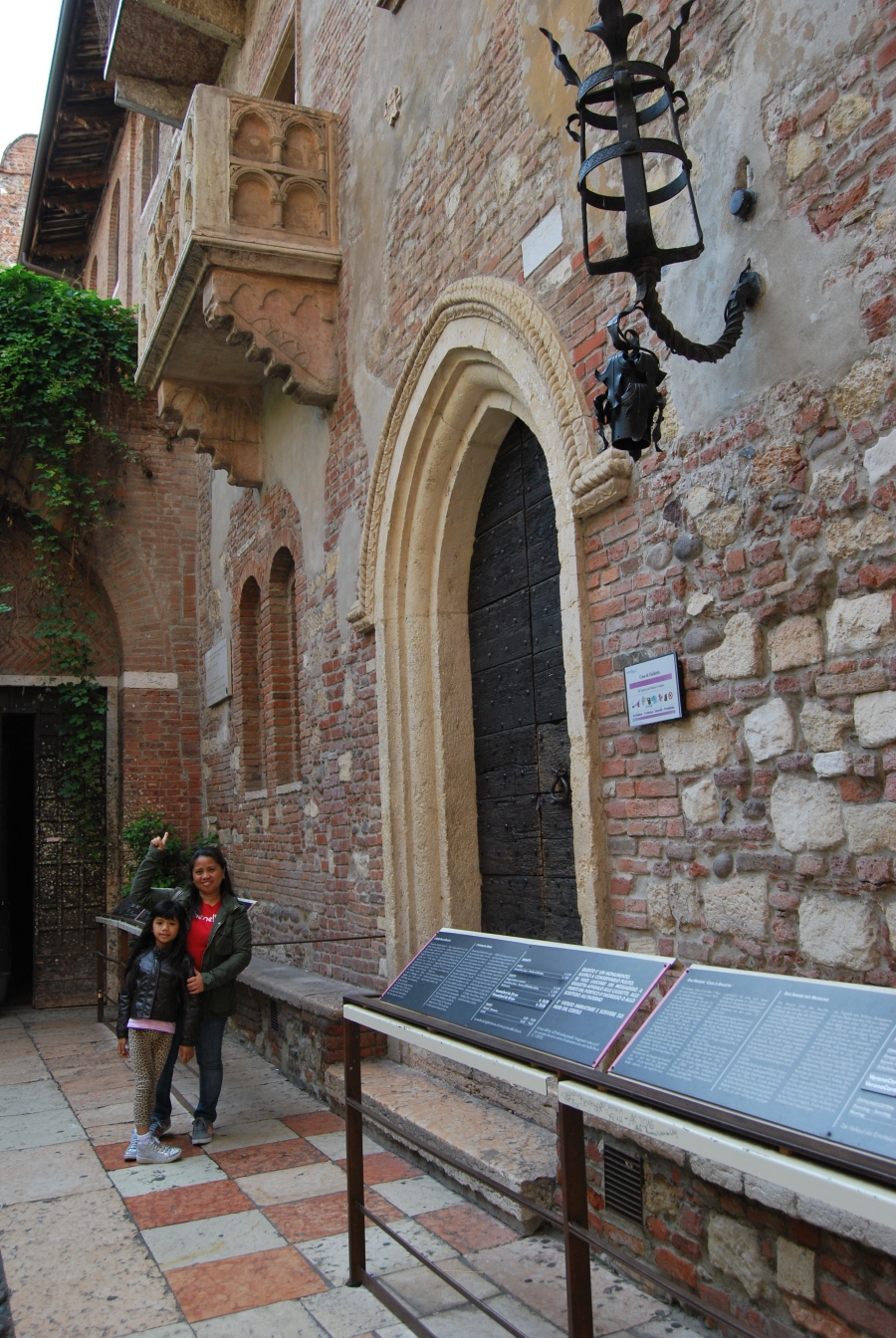
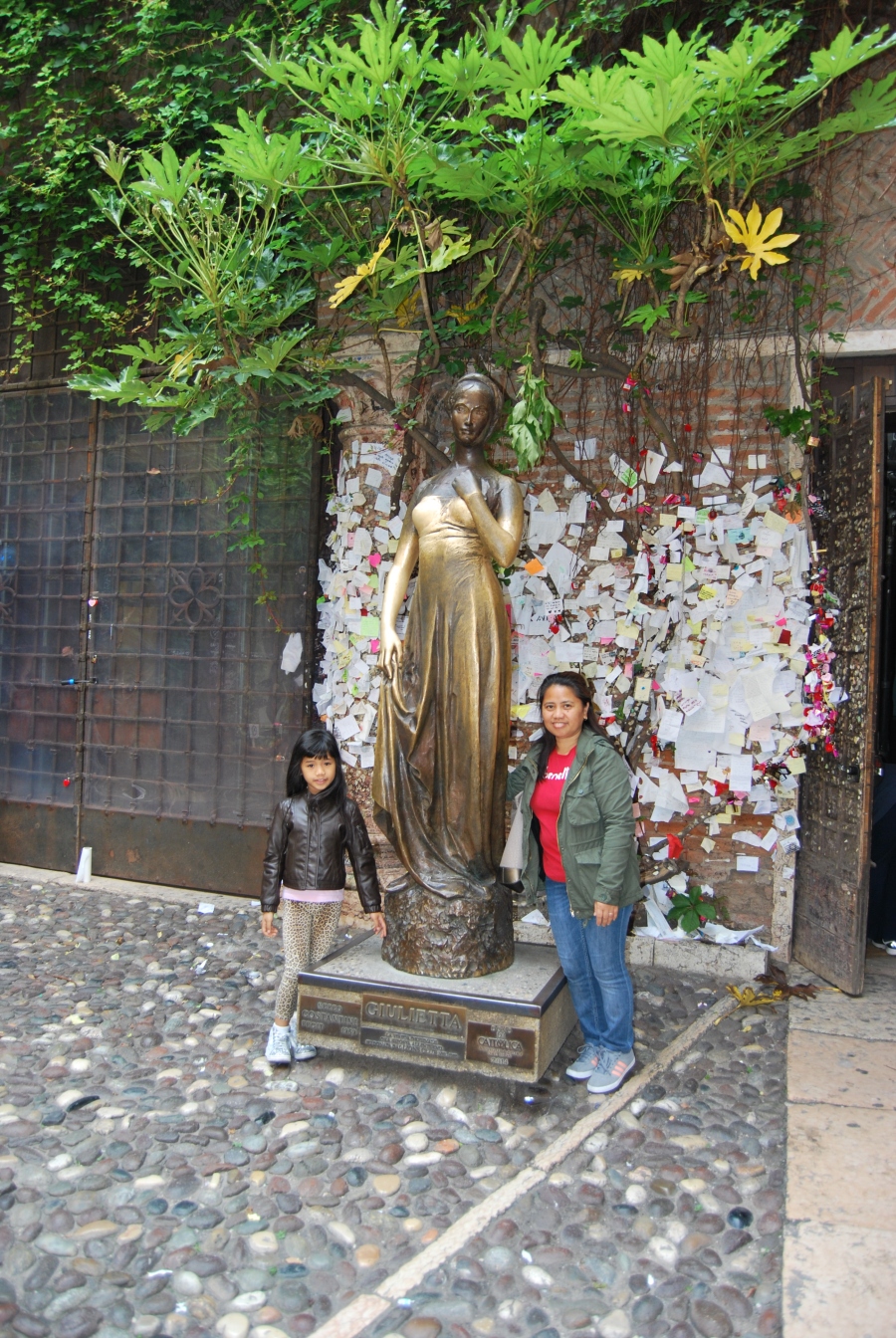
In the inner courtyard of Juliet’s house, in the ’60s was placed a bronze statue representing Juliet.In the 14th century, the two families of Montagues and Capulets were fighting one against the other… well, the rest of the story is well known.
What not everybody knows is that like in many legends, also in Juliet and Romeo’s (ladies first in Italy) story there is something true. The two families, Montecchi and Capuleti in Italian, the struggle for power that took place in Italy and in Verona at that time, the Scala family lords, are all true. In Verona there are still the houses of the two families, nowadays of course called Romeo’s house and Juliet’s house, with its famous balcony where is now also possible to get married.
The story was already popular in 14th century and there are at least three versions, written by Italian authors. Shakespeare version was part of a trend among writers and playwrights of the time to publish works based on Italian novellas. At the time of Shakespeare’s Romeo and Juliet, Italian tales were very popular among theatre patrons. Critics of the day even complained of how often Italian tales were borrowed to please crowds. Shakespeare took advantage of their popularity, as seen in his writing of both All’s Well That Ends Well and Measure for Measure (from Italian tales) and Romeo and Juliet. Shakespeare’s version is an adaptation of the Italian Giulietta e Romeo, by Matteo Bandello. Bandello’s story was translated into French and was adapted by Italian theatrical troupes, some of whom performed in London at the time Shakespeare was writing his plays. Although nothing is known of the repertory of these troupes, it is possible that they performed some version of the story. Bandello’s version too was an adaptation of Luigi da Porto’s Giulietta e Romeo.
Over the years, the walls upon entering the gate of Juliet’s house is filled with notes and writings on the walls. It’s hard to read them clearly, honestly. When i first visited this house, there’s an iron gate at the right side of Juliet’s monument filled with love locks.
This time, it was all gone. They removed the love locks and put them into the store just adjacent to the house. They decided to get rid of these locks because it may ruined the iron gate for its gets heavier each day.
There are lots of writings on the back side of Juliet’s monuments. Some are being removed. The writings were being eliminated early in the morning by the cleaning staff. We were there watching the two women getting rid of them. What’s the point?
The best way to keep your notes or love letters is to write directly to the committee.
Click link: Letters To Juliet
For those interested in writing, send your letter to:
Club di Giulietta
Via Galilei 3
37133 Verona ITALY
°°°°°°
All in all, this trip has been exciting, even a bit exhausting. If i will have another chance, i will go back again. Anyway, it’s all worth it!
___
Watch our Travel Video
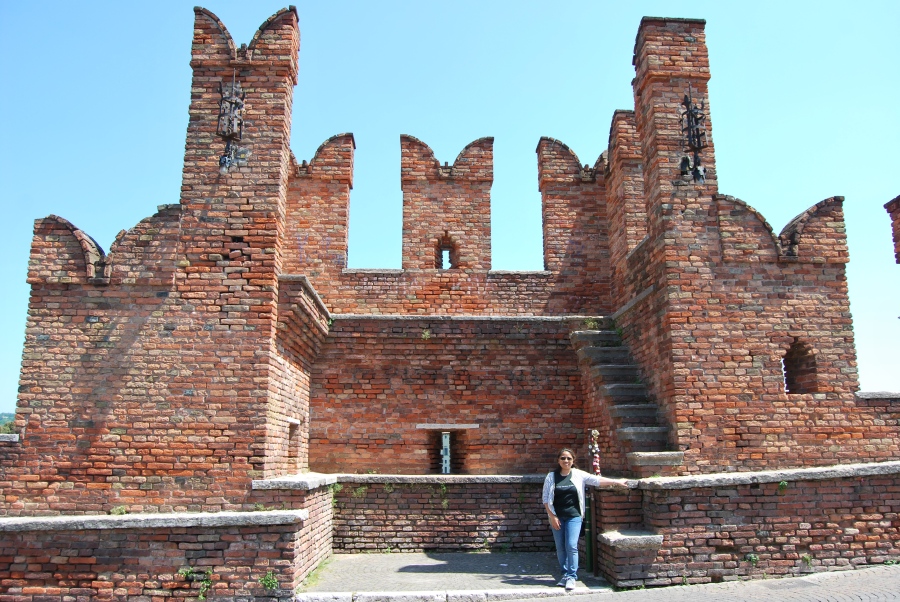
❥ – – – Until our next adventure – – ->







































Since I watched “Letters to Juliet”, I’m so inlove with Verona ❤
Jace | laagpamore.net
LikeLiked by 1 person
Thanks for the comment! Hope you can visit Verona one day.
LikeLike